How to measure employee engagement the right way: A complete guide for HRs

Table of contents:
1. What is employee engagement?
2. Why does measuring employee engagement matter?
3. How to measure employee engagement?
4. What is CultureMonkey? How to measure employee engagement with the people analytics platform?
5. What to do after you measure employee engagement?
6. Common mistakes that happen while measuring employee engagement
7. Final thoughts - Measuring employee engagement with the right tool
Am I measuring employee engagement the right way? How can I measure workplace engagement effectively?
If these are the questions that have ever crossed your mind, then you have come to the right place!
Measuring employee engagement levels across your teams is the best way to understand what actions need to be taken to retain employees, boost productivity, attract good talent, and improve employee performance.
But it is not as straightforward and easy as it sounds because what your employees feel about the organization is influenced by multiple factors. And the agitation around how to constructively measure employee engagement for HRs is comprehensible.
One can easily look at how much time an engaged employee has worked in a day, but measuring how highly engaged employees are committed and productive during the same period is exceptionally hard to determine.
But, if the right tools are deployed to measure employee engagement scores, trust us, it isn’t impossible.

Since employee engagement depends on multiple factors, such as work-life balance, work environment, and autonomy, you can understand and measure workplace engagement levels at your organization by delving deep into each of these factors.
However, no HR leader can manually get to the bottom of these aspects and gauge their employees' sentiments and engagement levels.
Do you feel like you are running in circles? Are you still bewildered and wondering how to measure workplace engagement? The most straightforward answer to this is: Adopt an employee engagement tool that automates processes and sends engagement surveys periodically, gathering deep employee insights.
Engagement surveys help you collect anonymous feedback from multiple employees at once and on various aspects. These insights collected will help you measure the engagement scores of your teams, no matter the size of your organization.
Measuring employee engagement is essential for the growth of any organization. As you already know, it helps you improve the productivity, efficiency, and retention of your employees. Although it continues to be a challenging task for a lot of HRs, have a data-informed employee engagement tool to give birth to all your strategies and measure real engagement results.
An ideal employee engagement software will give you the right data collection approach, automate engagement, wellness, and performance surveys, and provide a solid, tangible feedback action plan. With this, you can easily overcome the challenges of measuring engagement and see some fantastic results.
But back to where we started: how do you tell if you are measuring employee engagement benchmarks the right way or not? Buckle-up. We’ll tell you all about it right here.
What is employee engagement?
In today’s fast-growing and competitive world, retaining top talent has become a major challenge for organizations.
“How do I keep all my employees happy and retain them with the best culture?” is a question that secretly lurks in the minds of all HR leaders.
If you ask us “whether employee happiness and satisfaction alone is the key to employee engagement?” our answer would be a clear - NO!

Just because your employees seem to be happily participating in all the employee engagement initiatives like casual Fridays, potluck, etc., it doesn't qualify as "employee engagement", and this won't give them enough reasons to choose you over any other organization if offered a job opportunity. Employee engagement is so much more than that.
In reality, the actual definition of employee engagement is when an employee is emotionally invested in the organization's success of his/her team and company such that he/she goes that extra mile to get things done for the entire company while having the utmost job satisfaction with their own needs and personal goals.
And today, with the world slowly adapting to the post-pandemic work culture, employee happiness and adapting the art to measure employee engagement has become a more vital aspect of any business success.
Almost every HR leader would agree to the fact that engaged employees are productive and profitable for the company they work for.
“44% of businesses think improved employee engagement would lead to them better being able to retain, whilst 36% think it would have a positive impact on recruitment” (CBI)
But engagement does not happen on its own. It is important for HRs and managers to nurture and sustain it carefully. And for that, measuring engagement and coming up with data-backed strategies are crucial.
If you scour the internet, you might find hundreds of definitions for “What is employee engagement?” from various HR thought leaders across the world. That’s because employee engagement is a multi-faceted psychological construct that depends on numerous elements. That's exactly why measuring and improving employee engagement is equally comprehensive.
But before we get to how to measure employee engagement, let's understand why is measuring employee engagement important.
Why does measuring employee engagement matter?
The first step to improving a metric is to measure it the right way because what gets measured gets managed better.
Truth be told, when it comes to measuring engagement, there isn’t a one-size-fits-all approach. That is why what might work for people at Google or Facebook might not work for your employees.

And for the very same reason, measuring engagement constantly is a necessity as it'll help you reach the desired state for your employees and organization. Measuring employee engagement regularly will give you unique insights about your organization and help you create action plans that can dynamically improve the needs of your employees.
But what supersedes the frequency of surveys is your ability to take action on the feedback received from your employees at a faster rate because there’s nothing worse than asking your employees for feedback and being ignorant about it.
Now let’s discuss some of the benefits of measuring engagement:-
Lets you identify your strengths and weaknesses
Measuring engagement helps you stay informed about your strengths so you can develop them furthermore and will also point you towards your weaknesses so you know what needs to be improved to suit the company values.
Increases commitment towards work
Once you start listening to your employees’ feedback regularly and act on it, there’s a greater chance that they will be more committed and productive at work. You will clearly witness the difference when you'll measure overall engagement scores for your people.
Lowers employee absenteeism
Engaged employees take their jobs very seriously and also care about their team, company, and customers. So naturally, when employers know how to measure workplace engagement, they will see a lower rate of employee absenteeism and improved performance.
Increase in employee retention rates
With all the employee feedback initiatives being taken in measuring engagement, an HR leader can quickly analyze the employee’s problems and find a solution for them faster, making employees feel valued and thereby they improve employee retention rates.
Better communication and teamwork
By understanding how engaged your employees are, you can identify areas of improvement and create a better work environment. Better employee engagement leads to better communication and teamwork.
With employees are more engaged, they are more likely to communicate effectively with each other and work together to achieve team success.
Improves transparency within the organization
The whole process of anonymous employee feedback makes it true that "From a CEO to a janitor, every employee’s voice matters," enabling employees to anonymously give un-filtered feedback about their work environment, enabling to give un-filtered feedback about their work environment transparency in the organization.
So, there is no doubt that measuring employee engagement will improve the overall health of the organization while building a solid foundation for the company's culture.
While there are a number of reasons why organizations should measure employee engagement effectively, if not done right, your entire employee engagement strategy can backfire. That is why investing in a people analytics tool can be your best bet. Now, let’s dig deeper into how to measure the engagement levels of your employees the right way.
How to measure employee engagement?
To measure employee engagement, you would ask your employees a few relevant questions related to their workplace engagement, analyze their feedback, and take action on it.

It's not a piece of cake for most organizations, especially the ‘analyze the feedback’ part! With cumbersome data and loads of tasks on the plate to grow the company, leaders often skip or push the "analyze" part to the bottom of the funnel. If that's what you have been doing in the past in the name of measuring employee engagement - it's time to bring some change.
No matter what the size of your organization is, to truly measure the pulse of your employees, you need to have a proper measurement strategy that covers all bases of your workplace engagement. Plus, it should provide you with accurate and in-depth insights into your existing levels of engagement when you measure it.
Here’s where you can start; follow these best practices to measure employee engagement scores and metrics the right way:
- Establish an engagement goal for you to chase and communicate it with your team.
- Decide the engagement drivers you want to measure.
- Curate employee survey questions and conduct anonymous engagement surveys.
- Track and measure employee productivity and engagement metrics using the feedback received from the surveys.
- Set up one-on-one meetings to obtain better clarity on your engagement.
Measure employee engagement by establishing correct goals
Even before you start measuring engagement, set an engagement goal or target.
When it comes to measuring employee engagement, what you would want to do is to see where you currently stand and what you can improve in terms of your organization’s engagement to reach the set engagement goal.

Isn’t it always better to know what you are chasing than randomly flailing your arms in all directions - maybe if it is only a 10% increase in your employee engagement rate or a 5% increase in your retention rate?
Having an engagement goal is more important than anything, as it lets you know you are working towards a quantifiable goal and can constantly measure the engagement and track your progress.
But, before you set the engagement goal, you also need to be aware and prepared for the following:
- Do you have a person or a team to follow up and take action based on the insights you’ll receive from your engagement measurement strategy?
- Do you have the right tool for measuring engagement?
- Can you sustain employee engagement after measuring the results?
These are common, overlooked holes at the bottom of the boat that you must plug in before setting sail with your employee engagement strategy. Once resolved, you can ideally start measuring engagement in full form.
Now, you might be wondering how you can decide on an employee engagement goal or a standard to chase.
Let us clear the air around that.
Engagement does not have a one-size-fits-all approach, and it varies from organization to organization. Thus, there isn’t a magic number we can point you to as a target for your engagement strategies.
Every organization's mission is dependent upon - its employee size, existing organization culture, CEO’s influence on the organization, and more. That is why it is essential to select an engagement goal that is directly aligned with your desired business outcomes. Ultimately, if your engagement goal is accurate, measuring engagement and creating actionable reports with low and high scores will be seamless.
Don't forget, continuously measuring your engagement progress and tracking your engagement scores in real-time isn’t quite possible manually in today's fast-paced world. This is where engagement software like CultureMonkey can be of help.
CultureMonkey is an end-to-end engagement software that lets HR leaders listen to the feedback of their employees through constant and consecutive employee surveys, measures employee engagement by carefully analyzing the engagement score from the feedback received, and auto-recommends actionable feedback insights with advanced reports created keeping industry standards as the base.
Further in the post, we’ll tell you in detail how employee analytics software like CultureMonkey can help you measure workplace engagement in your organizations smoothly and effectively.
Measuring employee engagement drivers discreetly

Measuring engagement is like estimating the mileage of a vehicle. It is not just dependent on one but a number of factors, including the speed of the vehicle, an engine’s capacity, the pressure in the tires, and much more.
Similarly, to measure your employee’s engagement, you have to measure various factors that influence the engagement of your employees.
So, once you have your engagement goal in place, the next thing to do is to decide on these factors that will help you measure the workplace with the utmost accuracy.
For example, CultureMonkey measures engagement through these 15 essential employee engagement drivers:
- Rewards
- Recognition
- Autonomy
- Work-life balance
- Work-environment
- Management
- Leadership
- Innovation
- Involvement
- Professional Growth
- Social connection
- Purpose alignment
- Meaningful work
- Communication
- Wellness
You might be now wondering - “How could you possibly measure engagement on all these drivers?”
Enter - Employee surveys.
Measure employee engagement through employee surveys
Employee engagement surveys offer one of the quickest and most effective ways to measure engagement i.e to ask your employees about their needs by using different scales of rating and collecting real-time data about how employees feel.

Let’s dive deeper into how we can leverage employee feedback surveys to measure employee engagement.
Before you send employee surveys, you must make sure that you are asking relevant questions to them in the survey that captures their sentiments with clarity and allows them to give honest feedback. Unless their feedback is true, the measurement of engagement will be skewed.
Curating survey questions from the internet and using unplanned forms to send surveys may not be the most reliable way to measure engagement as it can be way too time-consuming, lead to manual errors and not deliver high-impact insights.
Again, that’s where engagement software like CultureMonkey can be of particular help.
CultureMonkey lets you choose employee survey questions from its library of 50+ carefully researched survey templates and allows you to send surveys to your employees with just a click of a button.
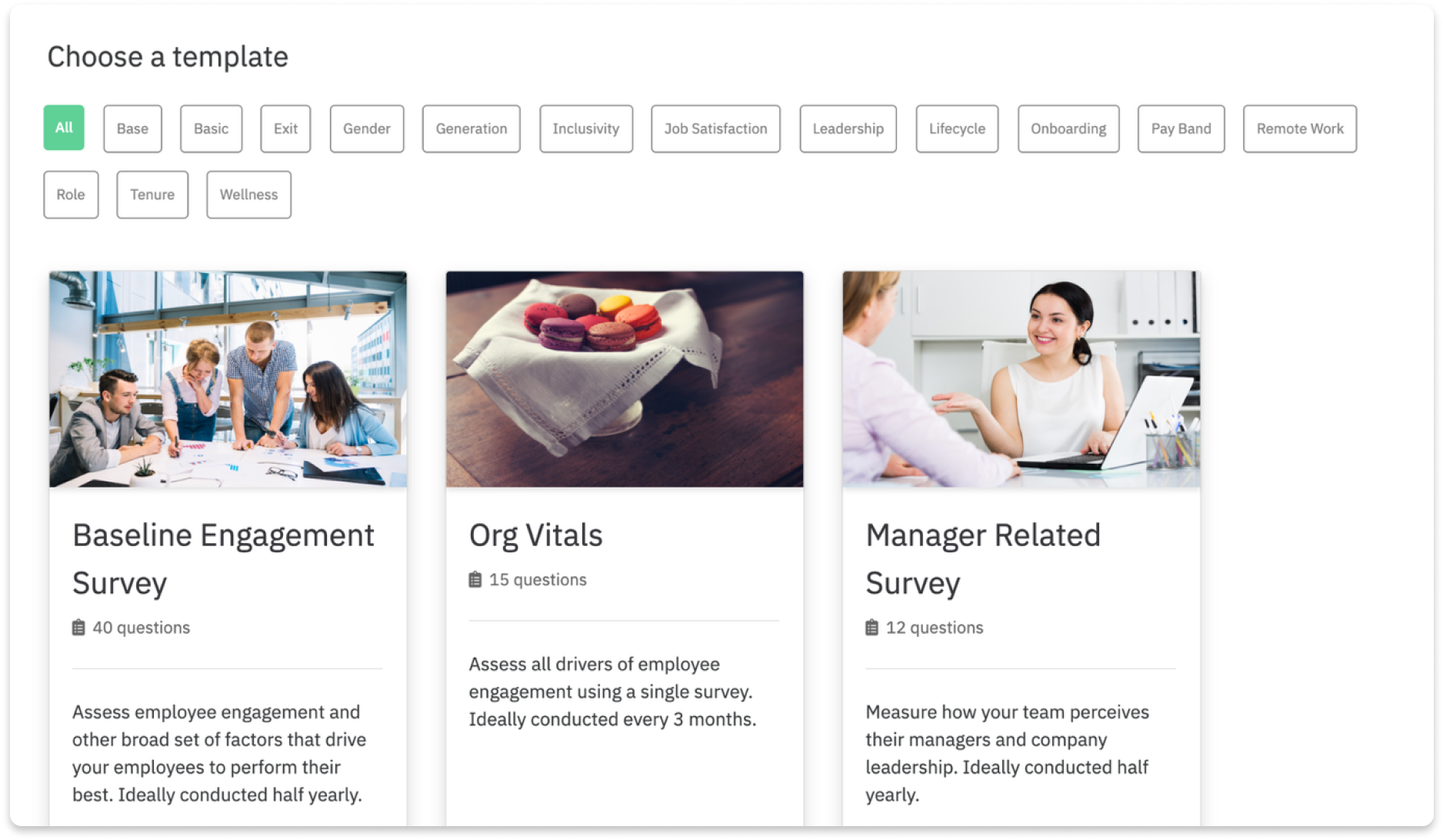
Not only that, CultureMonkey lets you create custom survey templates and add questions to your existing survey template because you know best what to ask your employees. Having a fair sense of your employee's needs will help you curate better surveys whose results can be measured to judge the engagement levels in your organization.
That said, let's see what types of surveys you can send to your teams to measure engagement.
Pulse surveys
As the name suggests, pulse surveys are short, quick surveys that let you collect feedback from your employees and that give you an immediate snapshot of your employees’ mood, that too with just a few sets of survey questions asked frequently.
And when it comes to the frequency of a pulse survey, based on your organization’s engagement strategy, you could time it to a weekly, fortnightly, or monthly basis. It's easier and faster to measure engagement through such surveys.
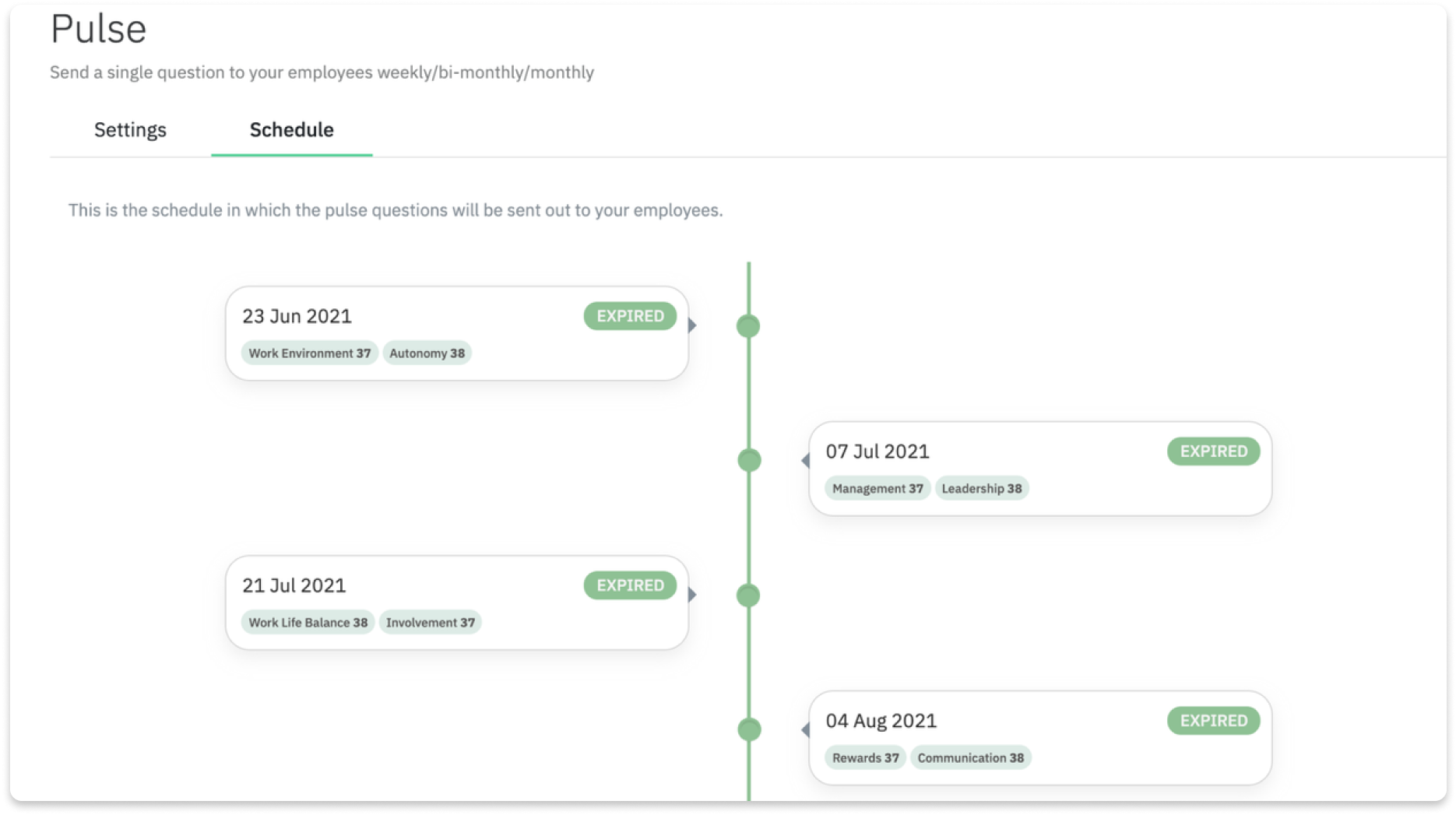
The fact that pulse surveys let you collect real-time, frequent feedback from your employees enables you to assess what needs to be improved in your workplace and measure engagement and performance at the same time. It also gives powerful action steps that let you be more attentive to the issues faced by your employees.
And conducting pulse surveys alongside annual engagement surveys will help you compare insights over custom periods to strategize a comprehensive engagement strategy and measure engagement results for your teams.
If you’re looking for some pulse survey questions to send to your employees, refer to the article here.
Employee lifecycle surveys
Employee lifecycle surveys are one of the best ways to leverage employee surveys as an engagement tool because it helps you cover all the bases in the organization’s lifecycle, from onboarding to exit interviews.
Employee experience starts right from when a candidate is onboarded into your organization to after he/she exits the organization. All the insights you gather in between these stages are what will help you to measure, improve and maintain your engagement across teams.
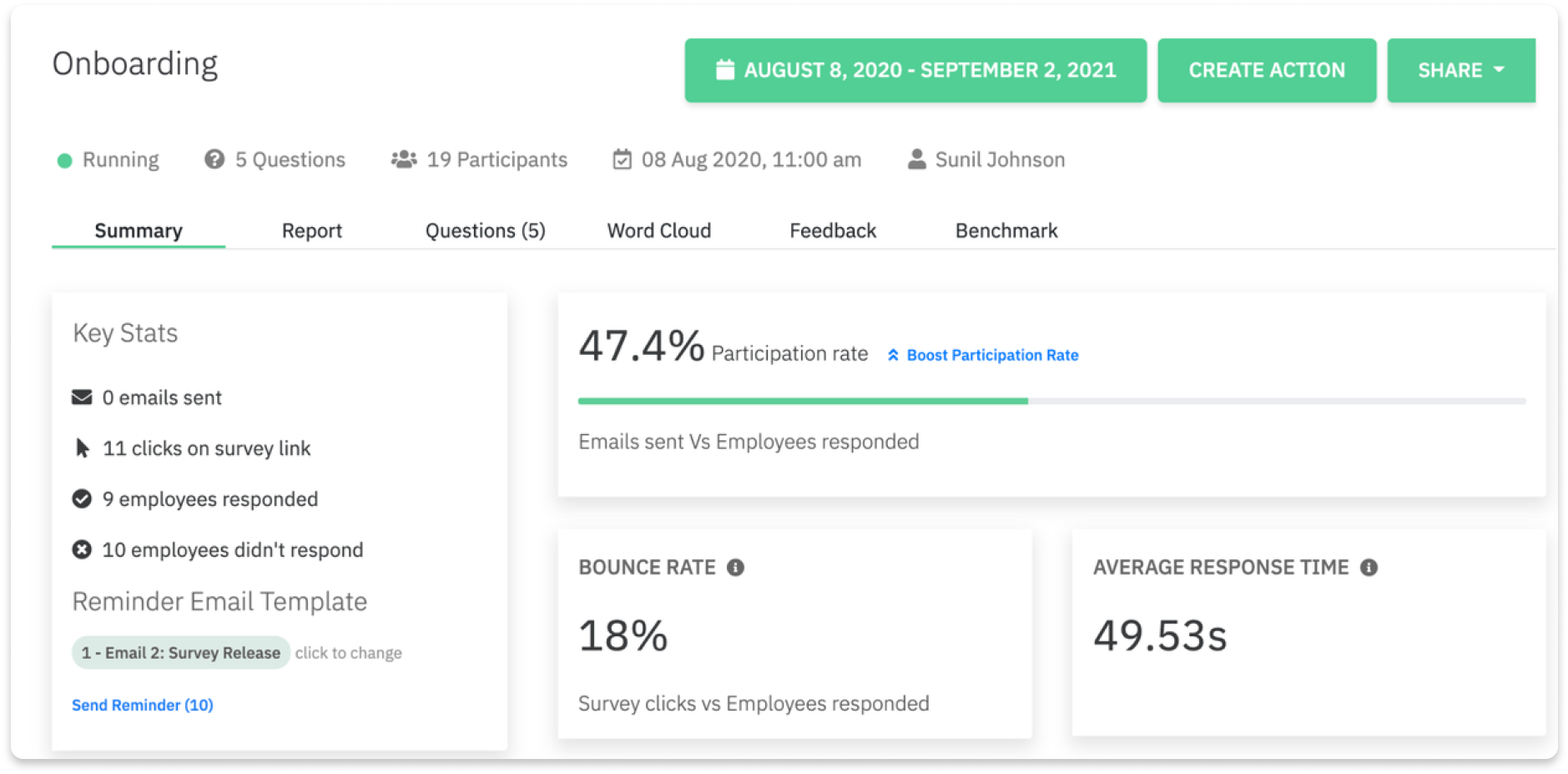
CultureMonkey’s employee survey platform lets you automate your employee lifecycle surveys, which means you can sit back and relax while the annual survey and pulse surve software gather valuable insights from your employees about their work experience with you across different stages.
Furthermore, CultureMonkey gives you lots of other insights and stats, like the participation rate for your surveys, so that you can figure out what needs to be done to improve your employees’ survey experience.
Speaking of improving employee experience, certain surveys are quintessential for measuring engagement, for instance, employee onboarding and exit interviews and surveys.
Employee onboarding survey
Employee onboarding surveys are what HR leaders generally use to gather information about how the new hires are settling into their organization to ensure that their onboarding has been smooth. But there’s much more you, as an HR leader, can do to leverage onboarding surveys further.
For instance, you can ask questions to gauge what kind of work environment a new employee is expecting in their new(your) organization. These insights will help you understand their mindset even better, and this tactic could certainly help you to understand the expectations of the new generations - millennials and Gen Zs.
Employee exit surveys
Employee exit surveys are one of the best ways to get honest feedback from your parting employees.
Comparing the results of these surveys with the previous exit surveys will help you identify any pattern in your company’s employee turnover rate, and armed with that insight; you can improve the retention rate at your organization.
With exit surveys, you can ask your parting employees questions about “how your current company culture can be improved?” and take suggestions from them to create a better work environment for your existing employees. Once you have laid down a strong foundation, measuring engagement will give you more eye-pleasing results by lowering the employee turnover rate.
Employee net promoter score surveys
Employee net promoter score is a metric used by organizations globally to measure the employee loyalty of their customers toward their brand.
Quite similarly, the employee net promoter score or e-NPS is an important engagement metric that needs to be tracked to identify the ambassadors of your organization and to understand and measure the employee engagement levels of your teams.
Unlike other employee engagement metrics, eNPS is great for getting a precise engagement score. Basically, you ask your employees survey questions like - How likely are they to recommend their family or friends to work in your company? (And that’s a rating question on a scale of 1-10)
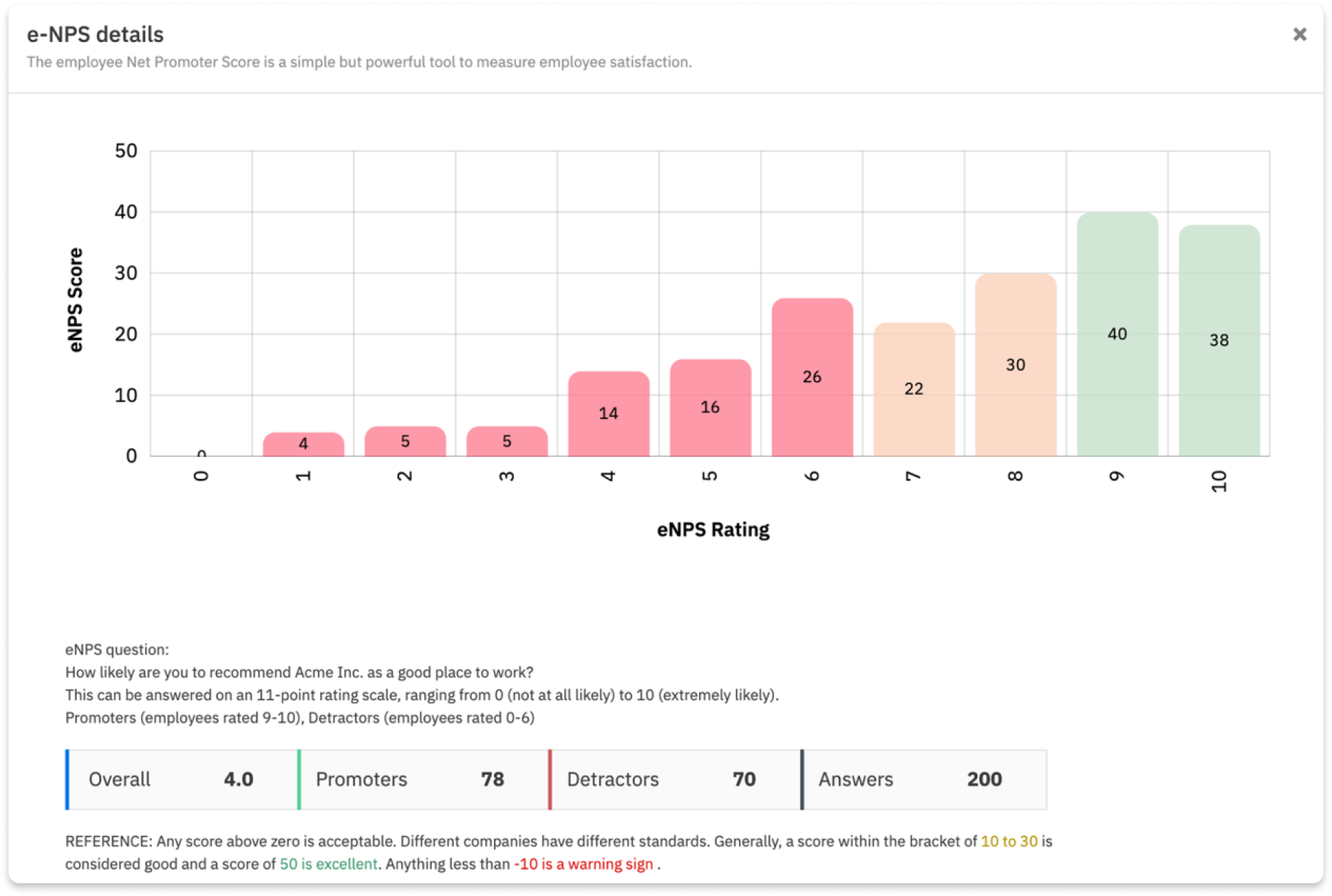
Based on their responses to the eNPS survey, your employees are classified into three focus groups - Detractors (who vote between 0-6), passives (who score between 7-8), and promoters (who score between 9-10).
Detractors are employees who might think that your organization’s work culture needs to be improved and are highly likely to leave, whereas promoters are the actual ambassadors of your organization who bring you more employee referrals.
Although e-NPS surveys do not exactly tell you why your detractors don’t recommend your organization for work, you at least get a snapshot of the health of your organization.
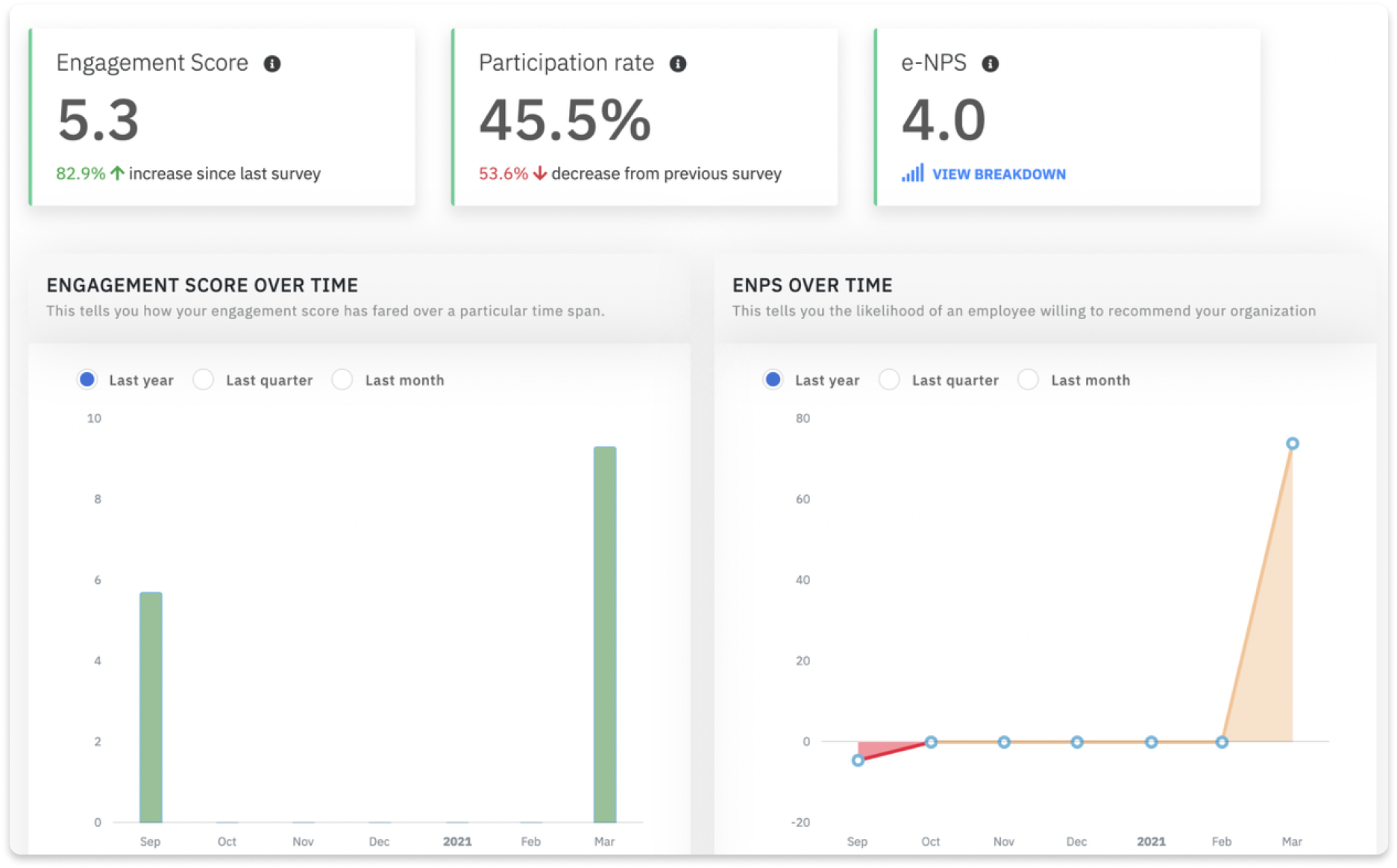
CultureMonkey’s people analytics platform measures employees' engagement and calculates the e-NPS by gauging the difference between the percentage of promoters and detractors. The e-NPS is not expressed in terms of percentage but as an absolute number lying between -100 and +100.
Measure employee engagement metrics like productivity and retention rates of your employees seamlessly with the engagement tool.
Now here comes the real deal, which is how to measure your employee engagement using people analytics software.
What is CultureMonkey? How to measure employee engagement with the people analytics platform?
Let’s assume you are an organization of almost 500+ employees and launch a survey using a regular survey tool. Now after you get the survey data, you will realize how painful it is to calculate and measure the engagement score using mere spreadsheets.
This is where a people analytics tool steps in, automates the process and saves the day for you.
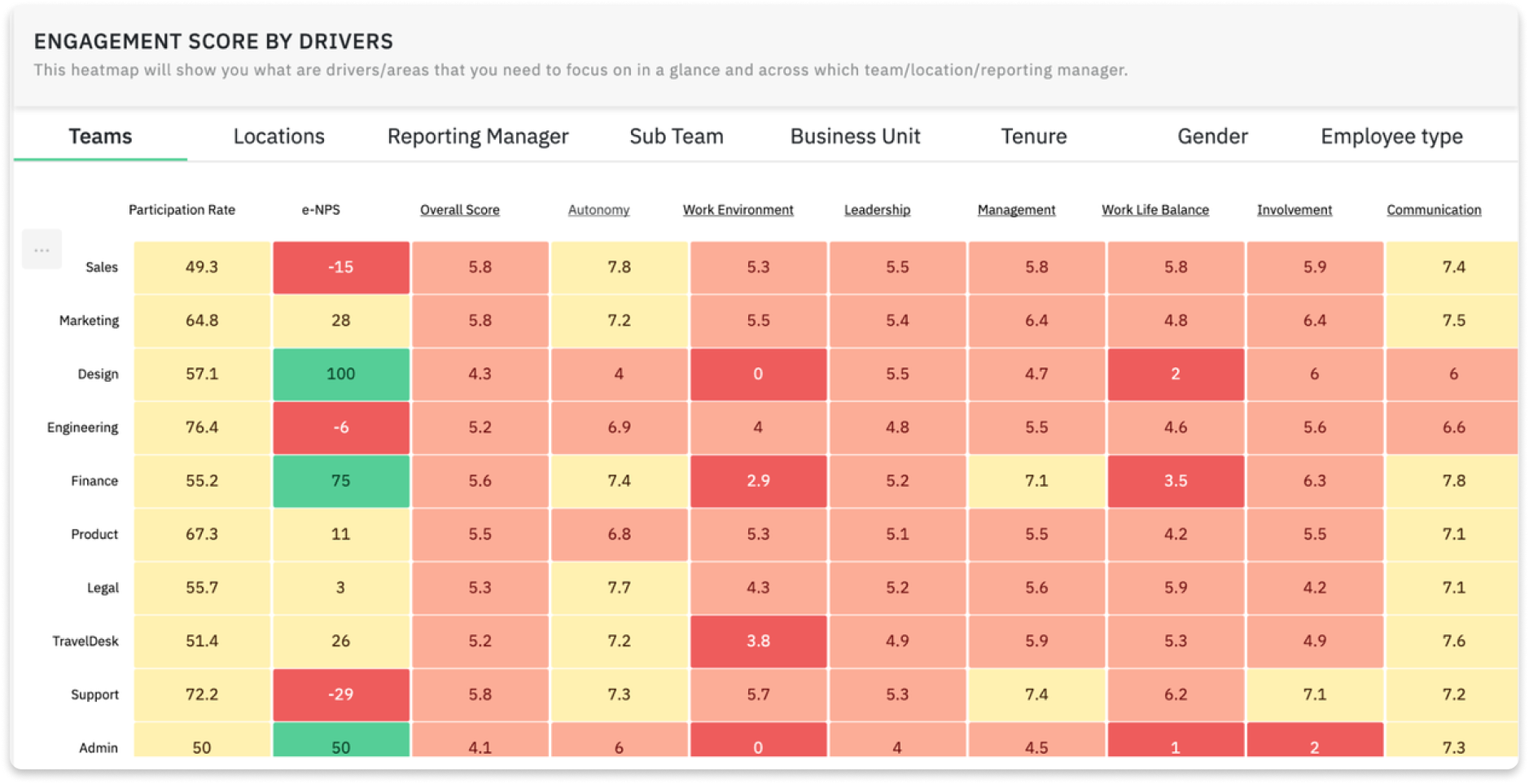
Let us take CultureMonkey for reference here, and see how a people analytics platform can efficiently help you with number crunching and measuring engagement.
CultureMonkey’s employee engagement platform helps you send engagement surveys and gathers feedback from your employees.
Once the employee feedback is collected, our feedback app analyses each response received using AI/ML algorithms, matches it with the 15 key workplace engagement drivers we discussed earlier, and populates and measures the engagement score for those drivers.
The average of all engagement driver scores gives you the engagement score of your organization.
With that being said, it is not only an HR leader’s job to measure and improve employee engagement but a manager’s job too.
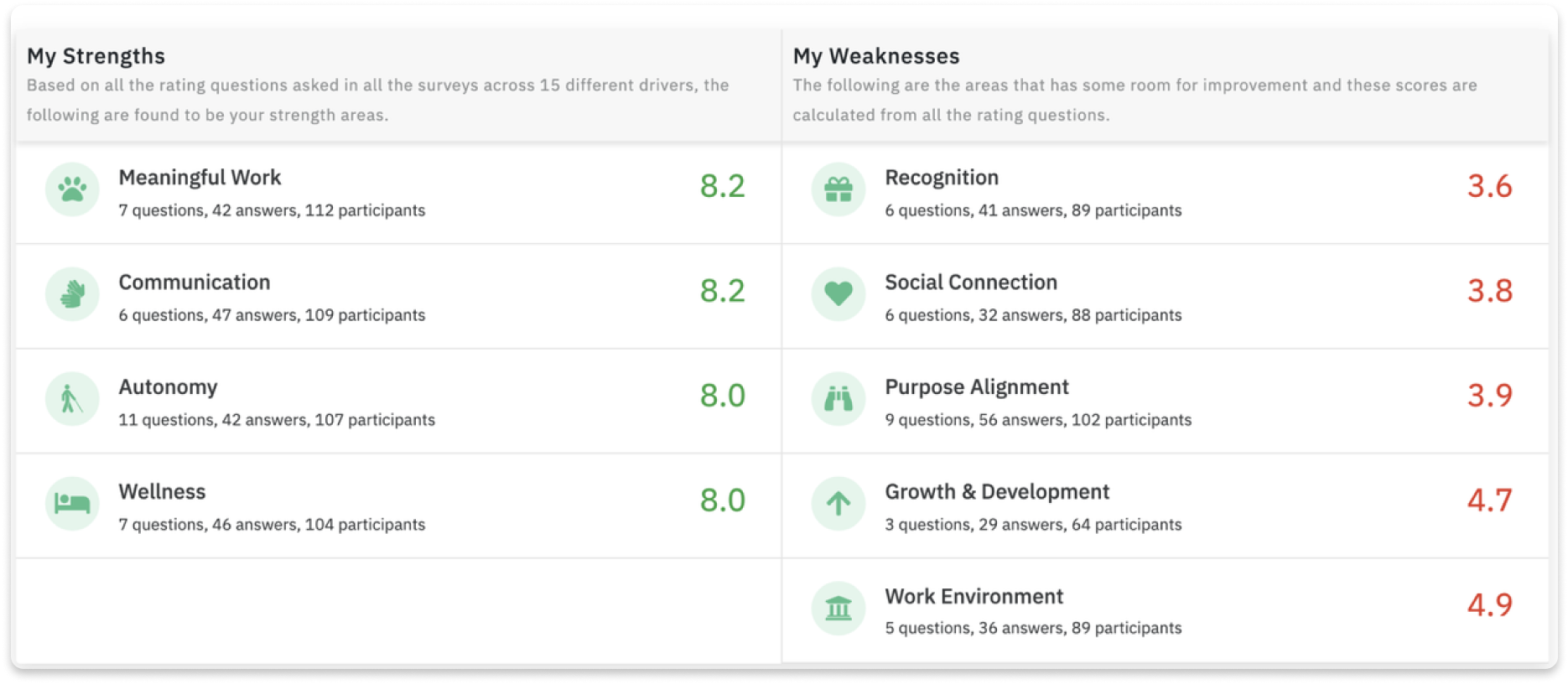
That’s why CultureMonkey’s engagement platform has dedicated manager dashboards that let managers keep a tab on their individual team’s engagement levels and monitor their strengths and weaknesses in managing and measuring engagement.
This particular aspect of CultureMonkey’s manager dashboard enables the individual managers to introspect into their leadership style better and provides a sustainable chance for them to improve their game.
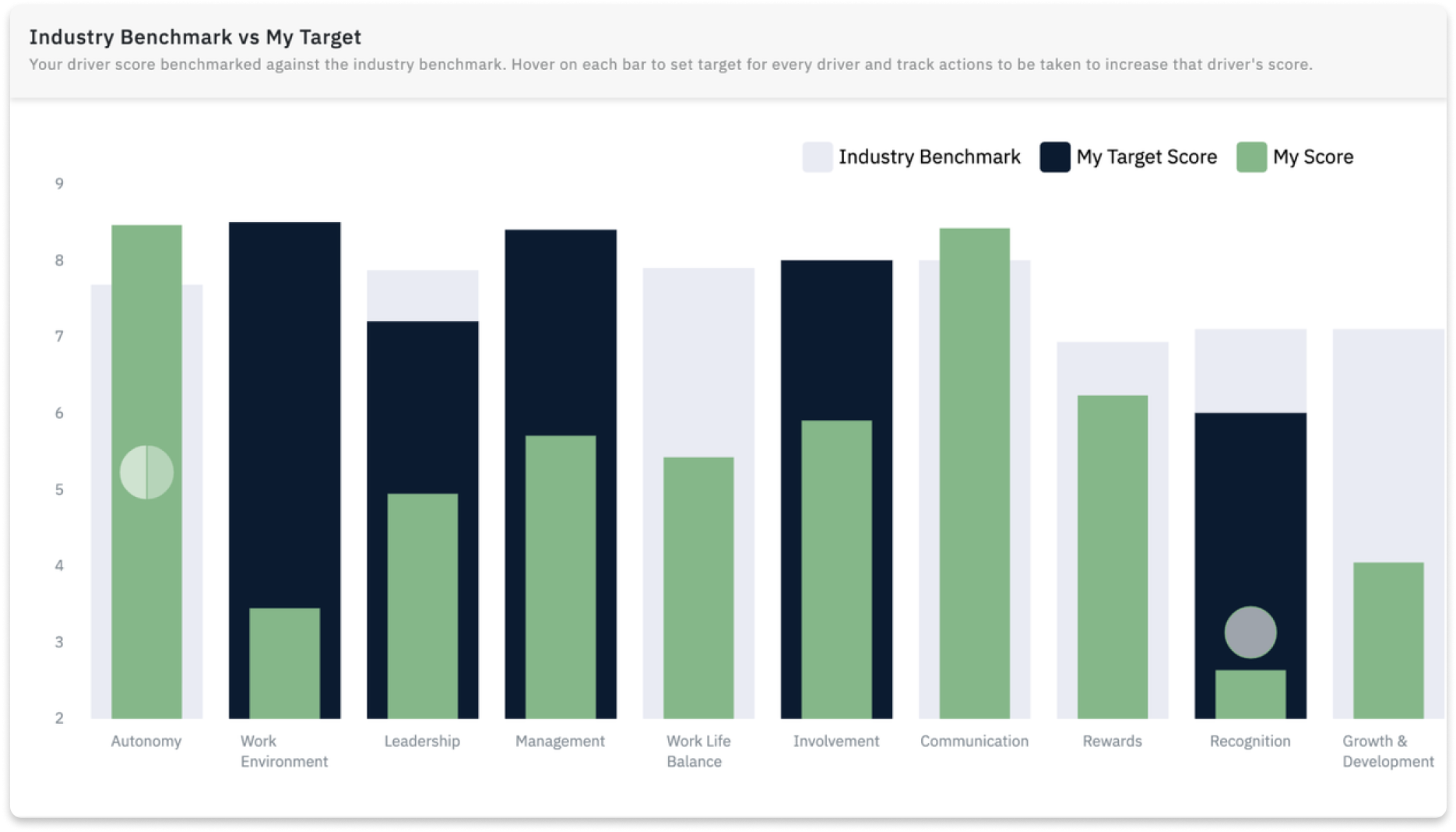
Speaking of improving the engagement levels from an individual manager’s perspective, CultureMonkey enables managers to set target engagement scores, which empowers them to strategize their engagement plan on a more personalized level to execute it and improve engagement.
One-on-one meetings
Personalization is the key to any employee engagement strategy, and nothing beats a one-on-one meeting with your manager, where he/she gets to coach and mentor, gives clarity to you, and even lets you express what needs to be improved to increase your workplace engagement to them.
With the pandemic forcing most organizations to work remotely, employees are not in sync with their managers now more than ever, and this has made it essential for you, as a manager, to have regularly scheduled one-on-one meetings with your employees.
Moreover, nothing beats a personalized engagement approach, where you sit with your employee and listen to what they got to say, act on it and measure employee engagement to check the organization's health.
Also, employees are more likely to share detailed and actionable feedback with you when you’re meeting one-on-one with them.
That too, when you complement the traditional one-on-one meetings with the employee surveys, you will have a higher chance of driving and measuring engagement in your organization with utmost accuracy.
Now, while setting up a one-on-one meeting with your employee, there are certain things you need to make sure to get valuable feedback from them:
- Open up with an ice-breaker conversation to make the conversation lighter and make the employee feel comfortable with the process.
- Get rid of any distractions while speaking to them and put your complete focus on what they say.
- Talk about their interests; this makes them feel that you care about them, and they will trust you and give honest and qualitative feedback.
- Make sure that - the interaction and the feedback received remain confidential.
What to do after you measure employee engagement?
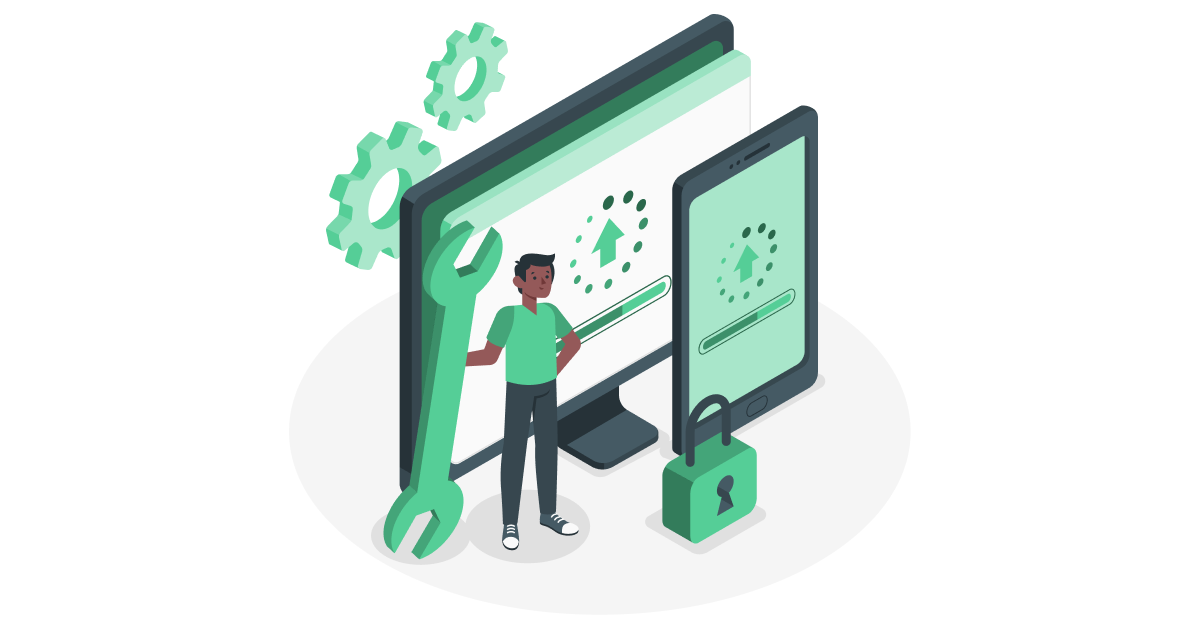
Your actual work of improving employee health starts only when you are done measuring engagement. One might have utilized any method to measure and improve engagement, but it is pointless if you do not collate the data and start acting on it in the first place.
Taking swift action to resolve the employee feedback received should be the first step you need to take to enhance employee satisfaction, productivity, and engagement.
“60% of US employees say they have ways of giving feedback about their experience, only 30% say it’s acted on by their employer.”
Let us walk you through some of the best measures you can take to make a better impact with your survey results.
Leverage the survey data
When you use good employee analytics software, you get access to multiple dimensions of survey data and engagement scores that you can leverage to come up with an employee engagement strategy that is data-driven and suits your needs.

For instance, if you get a lot of employee feedback regarding the lack of communication from the leadership, you instantly know you need to create more social agendas to make the changes.
Also, don’t get overwhelmed with all the varied employee feedback you receive. Instead, pick the low-hanging fruits first, i.e resolve employee feedback that is easily workable with just a little intervention from your end.
Ask yourself questions like:-
- How can I improve the productivity of my team using the survey data?
- How engaged are my employees right now?
- Are there any common trends that you can see from the employee feedback results that need your immediate attention?
Create an employee engagement strategy
Once you are done with your employee engagement survey, you get to compare the results with the engagement goal that you set in the beginning as a north star metric.
You can then measure employee engagement levels by looking at the areas you need to improve and assess what is working for you in the areas where you are performing well.

Based on these observations from the survey results, create an improvised employee engagement strategy that would enable you to strengthen your engagement with your employees and meet your engagement goal.
Remember - speed is of the greatest essence in this stage, so it is recommended you address the survey results while they are still relevant.
Communicate the results and engagement plan

You cannot generate trust amongst your employees if you can’t be transparent with them about the process of measuring engagement.
That is why you must convey your survey results and the follow-up engagement plans to them through a company-wide meeting or town hall so that everybody is informed about what is happening.
This aspect of you being transparent towards your employees will drive great survey participation rates in the future and act as a reminder to trust you as a leader who genuinely cares about the employees.
Also, take time to get feedback from your employees about the engagement practices you conduct and improve as per their feedback - for example, if most of your employees feel that their pulse surveys should be more frequent, you know what you need to do then and there. Ultimately working on the feedback will give you a better comparison to measure employee engagement with custom timelines.
Follow up and repeat the plan
As a people leader, when it comes to improving and measuring engagement, you need to frequently and quickly follow up with your employee feedback because a successful workplace engagement strategy is a cyclical journey of constant improvement of company culture.

Comparing the new results with the older ones to see how far you have come, making improvised engagement strategies, and providing a great work experience for your employees - are what it takes to become a great place to work for.
Thus, keep rinsing the existing strategy and repeating it to sustain and improve employee engagement in your organization.
Thank your employees for participating
Express your gratitude and appreciation towards your employees constantly. Because without their support and cooperation, there is no engagement strategy you can pursue.
This gesture of yours makes your employees feel more involved and motivated in the process of measuring engagement.
Common mistakes that happen while measuring employee engagement

Here are some common mistakes you, as a leader, can avoid while measuring employee engagement.
- Not managing the frequency of your employee engagement surveys
Measuring employee engagement is not an annual task to tick off from the checklist. As we discussed earlier - it's a constantly fluctuating factor based on your employees’ feelings towards their work environment.
For instance, the state of your employees who once used to see working from home as an incentive might have probably changed now due to prolonged remote work.
Moreover, when you have long gaps between surveys, you miss out on important employee feedback, and by the time you have your hands on the feedback and try acting on it, it would have been too late.
That is why conducting employee surveys frequently matters. The more employee feelings are collected, the better the measurement of employee engagement scores.
- Solely relying on pulse surveys to gauge employee engagement
Yes, pulse surveys help you get short, frequent, and instant feedback from your employees. However, pulse surveys shouldn’t be the only weapon in your arsenal when measuring employee engagement.
We agree that an annual engagement survey is a once-in-a-year activity and that it can’t offer actionable insights in real-time, but they gather a lot of useful information that enables you to see the bigger picture in terms of your organization’s engagement which a short pulse survey could not provide.
Even employee lifecycle surveys can help you reduce the friction between annual engagement surveys and pulse surveys by measuring the employee engagement levels of your teams at each stage of their lifecycle.
- Conducting employee survey only for a sample employee population
Surveying just a sample population is one of the worst mistakes you could make while measuring workplace engagement. Because the survey results that you receive by getting employee feedback from that sample audience will skew your overall employee engagement metrics.
Some companies don’t include blue-collar employees and other executives as their survey participants because, at times, these guys don’t have access to emails, and reaching them with a survey is hard.
This whole concept of excluding certain employees from participating in employee surveys defies the purpose of conducting the survey, which is to enable all your employees, from the CEO to a janitor, to voice their opinions transparently. It not only ruins the scale of employee engagement measurement but also damages trust and transparency within teams.
- Chasing numbers when it comes to measuring employee engagement
Your annual employee engagement survey results are indeed valuable as they give a metric for you to understand the success of your efforts. But most companies derail from their actual employee engagement initiative while chasing and measuring workplace engagement scores.
Check yourself if you want to overcome the need to show your leadership a fabulous engagement score. What measuring workplace engagement should ideally do for you is help you track, improve and sustain employee engagement.
There is no point in chasing numbers (Employee Engagement scores). Instead, use these numbers or these surveys to drive change within the organization - to consistently improve and measure employee engagement.
An engagement survey’s sole purpose is to listen to the feedback of your employees, and it's not a tool for you to just measure the final employee engagement score that you can boast about. But rather, using it as an opportunity to reach or sustain high levels of employee engagement.
Because employee engagement is a dynamic area influenced by many factors, it is constantly changing. So getting a high engagement score once does not ensure your score remains the same forever. Rather, measuring the employee engagement score consistently to see the impact of your engagement strategy is what we would recommend to you.
Final thoughts - Measuring employee engagement with the right tool
Now that we’ve discussed all the employee engagement measurement strategies and action plans to improve your organization’s employee engagement, it's all in your hands as a people leader to pick up the strategy that works best for your organization and put it into action.
But remember, at every stage of the process of measuring employee engagement, you must collect accurate data because that is what will drive you in the right direction in improving your employee engagement.
Pssst… If you’re interested in measuring employee' engagement the right way for your teams and organization, talk to one of our experts here.



